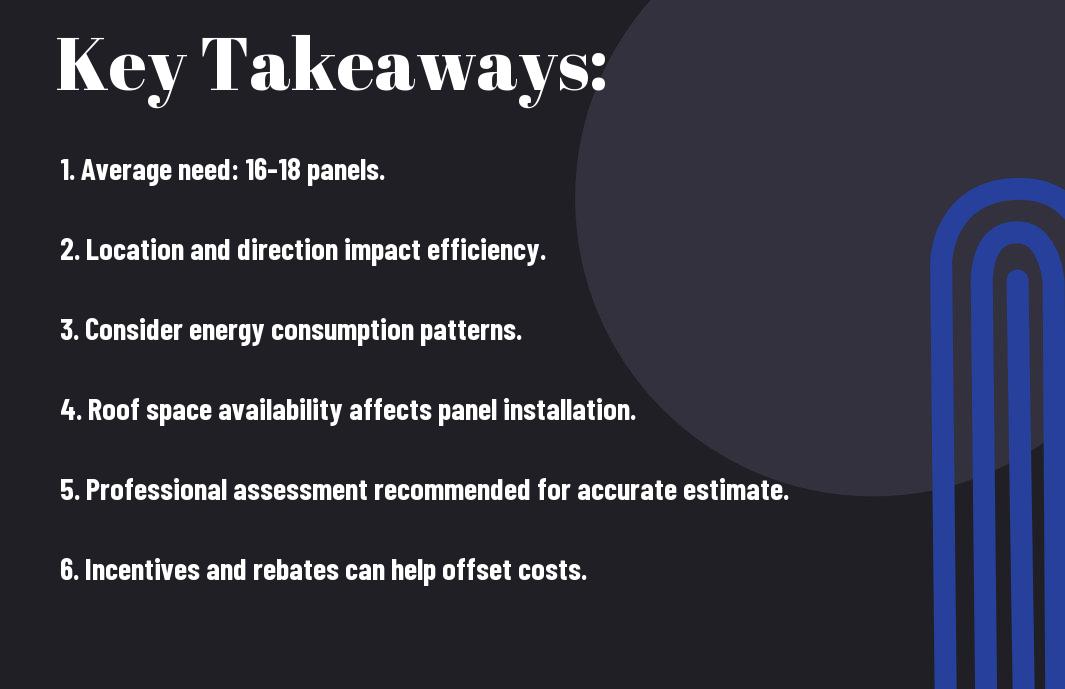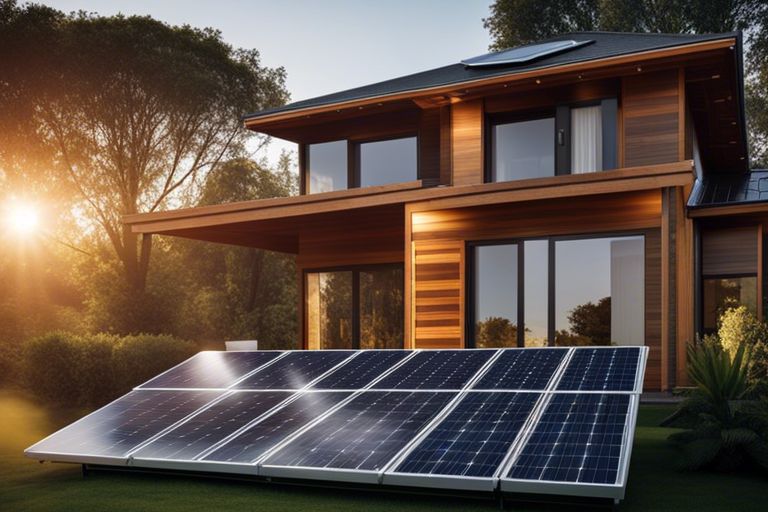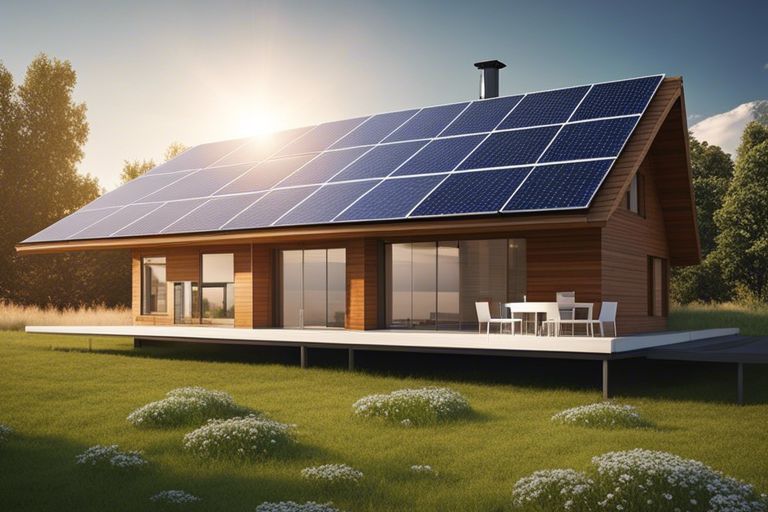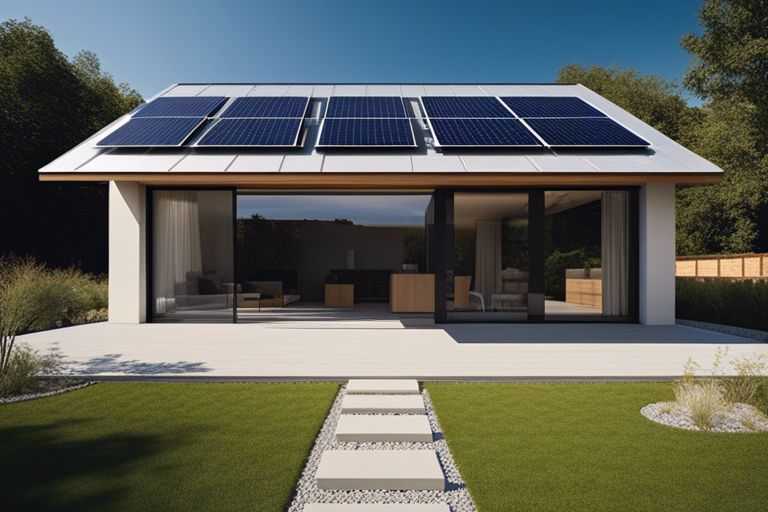There’s no one-size-fits-all answer when it comes to determining how many solar panels you need to power your 2000 sq ft house. Several factors such as your location, sun exposure, energy consumption habits, and panel efficiency play a crucial role in making this calculation. In this blog post, we’ll guide you through the process of estimating the number of solar panels required to run a 2000 sq ft house efficiently and sustainably. Let’s dive in!
Key Takeaways:
- Solar panel size: The number of solar panels needed to power a 2000 sq ft house will depend on the wattage of the panels. Higher wattage panels may require fewer panels to generate enough electricity.
- Energy consumption: Before determining the number of solar panels needed, it is important to calculate the energy consumption of the house. This will help in sizing the solar power system appropriately to meet the household’s energy needs.
- Location and sunlight: The amount of sunlight the location receives and the orientation of the solar panels play a crucial role in determining the number of panels required. It’s important to consider these factors to maximize the efficiency of the solar power system.


Determining Your Energy Needs
Calculating Your Energy Consumption
For a 2000 sq ft house, calculating your energy consumption is crucial in determining how many solar panels you will need. Start by looking at your past utility bills to see how many kilowatt-hours (kWh) of energy you typically use each month. You can also use online tools or work with a professional to estimate your energy needs based on factors like the size of your house, the number of occupants, and your appliances’ energy efficiency.
Factors Affecting Energy Usage
Usage of energy in a house can be affected by various factors such as the climate in your region, the insulation quality of your home, the age and efficiency of your appliances, and your daily habits. For example, if you live in a cold climate, you may use more energy for heating during the winter months. Assume that replacing old appliances with energy-efficient models can significantly reduce your energy consumption and lower your electricity bills.
-
- Your insulation quality affects your heating and cooling needs.
- Efficient appliances consume less energy than older models.
- Daily habits like turning off lights and appliances when not in use can save energy.
Assume that investing in energy-saving upgrades for your home can lead to long-term savings on your energy bills.
Assessing Your Solar Potential
Evaluating Your Roof’s Solar Exposure
Your roof’s solar exposure is a crucial factor in determining the feasibility of installing solar panels on your home. Take note of the direction your roof faces, as south-facing roofs receive the most sunlight throughout the day. Additionally, consider any potential obstructions such as trees or nearby buildings that may cast shadows on your roof during peak sunlight hours. These factors will impact the efficiency of your solar panels and the overall energy production of your system.
Considering Shading and Obstructions
With shading and obstructions, it’s important to assess how they will impact the performance of your solar panels. Trees, buildings, or even chimneys can cast shadows on your roof, reducing the amount of sunlight your panels receive. This can result in decreased energy production and potential inefficiencies in your solar system. By evaluating and addressing these shading issues, you can maximize the effectiveness of your solar panels and ensure optimal energy generation for your home.
For instance, if a nearby tree is casting a shadow on your roof for a significant portion of the day, it may be necessary to trim or remove the tree to improve your solar exposure. Additionally, positioning your solar panels away from obstructions will help ensure they receive maximum sunlight and operate at peak performance levels. By carefully considering shading and obstructions, you can make informed decisions to harness the full potential of solar energy for your home.
Sizing Your Solar Panel System
Calculating Your Required System Size
System size is crucial when determining how many solar panels you need to power your 2000 sq ft house. To calculate this, you’ll first need to assess your daily energy consumption in kilowatt-hours. Once you have this figure, you can multiply it by the number of sunlight hours your location receives to determine the required system size in watts.
Choosing the Right Panel Efficiency
Any solar panel system you install should have high efficiency to maximize the energy production for your 2000 sq ft house. Efficiency is key because it determines how much sunlight the panels can convert into electricity. Look for panels with higher efficiency ratings to ensure you get the most out of your system.
Your solar panel system’s efficiency will have a direct impact on its performance and how many panels you’ll need to power your home. Higher efficiency panels mean you can generate more electricity in a smaller space, which is advantageous if you have limited roof space or want to offset your energy consumption as much as possible.
Types of Solar Panels for Your Home
All solar panels are not created equal. When choosing the right solar panels for your home, it’s important to understand the differences between the various types available. There are two main types of solar panels commonly used for residential installations: monocrystalline and polycrystalline panels. Both have their own set of advantages and disadvantages.
Monocrystalline vs Polycrystalline Panels
Polycrystalline panels are made from melted raw silicon, which is then poured into molds and cooled. These panels are less expensive to produce than monocrystalline panels, making them a popular choice for budget-conscious homeowners. Monocrystalline panels, on the other hand, are made from single-crystal silicon, which gives them a sleek black appearance and higher efficiency rates. Though they may come at a higher price point, monocrystalline panels tend to take up less space and are more efficient in converting sunlight into electricity.
Thin-Film vs Traditional Panels
Your choice between thin-film and traditional panels will depend on your specific needs and preferences. Thin-film panels are flexible and lightweight, making them easier to install on unconventional surfaces like curved roofs. They also perform better in high-temperature conditions compared to traditional panels. However, traditional panels, whether monocrystalline or polycrystalline, typically have higher efficiency rates and a longer lifespan.
Thin-film panels are a good option if you have limited roof space or want a more discreet solar setup. However, if maximizing energy production and longevity are your top priorities, traditional panels might be the better choice for your home.
System Configuration and Layout
Despite the size of your house, there are various factors to consider when determining the configuration and layout of your solar panel system. Two crucial elements to think about are the connection type and the orientation of the panels.
Series vs Parallel Connections
Series connections involve linking solar panels in a chain, which increases the system’s voltage. This configuration is useful when you have long wire runs or when your panels have a higher voltage rating. On the other hand, parallel connections connect all the positive sides of the panels together and all the negative sides together, increasing the system’s current. When deciding between series and parallel connections, consider the size of your system and the components you are using to ensure optimal performance.
Optimal Panel Orientation and Tilt
Panel orientation and tilt play a significant role in maximizing the efficiency of your solar panel system. To get the most out of your panels, they should ideally face south in the northern hemisphere or north in the southern hemisphere. Additionally, the tilt angle should be approximately equal to your latitude for optimal energy production. Adjusting the angle seasonally can further optimize energy generation throughout the year.
A professional installer can help you determine the best orientation and tilt for your specific location to ensure you get the most out of your solar panel system. Factors such as shading, roof pitch, and local weather patterns all play a role in deciding the optimal configuration for your panels.

Local Regulations and Incentives
Once again, when determining how many solar panels you need to run a 2000 sq ft house, it’s crucial to consider local regulations and incentives. These factors can greatly impact the cost and feasibility of installing solar panels on your property.
Net Metering and Grid Connection
One important consideration is net metering and grid connection. Net metering allows you to sell excess electricity generated by your solar panels back to the grid, potentially reducing your electricity bill. Make sure to check with your local utility company to see if they offer net metering programs and what the requirements are for grid connection.
Federal and State Tax Credits
Credits for federal and state tax incentives can significantly reduce the upfront cost of installing solar panels. The Federal Investment Tax Credit (ITC) currently allows you to deduct 26% of the cost of your solar panel system from your federal taxes. In addition to the federal tax credit, many states offer their own incentives such as rebates or additional tax credits. Be sure to research what credits are available in your area to maximize your savings.
Metering:
By installing a bi-directional metering system, you can accurately measure the electricity your solar panels produce and the amount you consume from the grid. This allows you to track your energy production and savings over time.
To wrap up
Hence, to run a 2000 sq ft house solely on solar power, you would need approximately 18-20 solar panels. Keep in mind that this number can vary depending on factors such as your location, energy consumption habits, and the efficiency of the solar panels you choose. It’s always best to consult with a professional solar installer to get a more accurate assessment tailored to your specific needs.
FAQ
Q: How many solar panels are needed to power a 2000 sq ft house?
A: The number of solar panels needed to power a 2000 sq ft house depends on several factors, including the energy consumption of the household, the efficiency of the solar panels, and the amount of sunlight the area receives. On average, a 2000 sq ft house may require around 16-20 solar panels, each with a capacity of about 300 watts, to cover its energy needs.
Q: What is the average energy consumption of a 2000 sq ft house?
A: The average energy consumption of a 2000 sq ft house can vary depending on factors such as the number of occupants, the appliances used, and the climate. However, a rough estimate puts the average energy consumption of a 2000 sq ft house at around 800-1200 kWh per month.
Q: How can I determine the number of solar panels needed for my 2000 sq ft house?
A: To determine the number of solar panels needed for your 2000 sq ft house, you can start by calculating your average monthly energy consumption. You can then use this information, along with the efficiency of the solar panels you plan to install and the amount of sunlight your area receives, to estimate the number of solar panels required. Consulting with a solar energy expert can also help you make a more accurate assessment.
